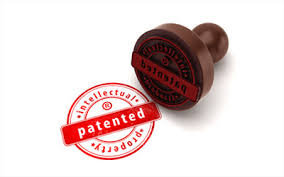How to get the patent in India? – Step by step guide- Patent registration
How to get patent in India: here is a step by step guide of patent process in a simplified manner.
Step1: Write down the invention idea or concept with as many details as possible:

First and foremost thing is to collect all the required information about your invention such as:
- Area of the invention;
- Description of that invention
- How it works
- What it does
- Advantages of the invention
Importantly, if you have worked on the invention during the research and the development phase, you should have something called lab record which is duly signed with date by you and the respective authority.
Step 2: Includes diagrams, drawings or sketches explaining the working of the invention:


The diagrams and the drawings have to be designed in a way that it should explain the working of the invention along with the visual illustrations. They play an important role in the patent application.
Step 3: Check whether the invention is patentable subject matter:

All inventions may not be patentable as per the Indian patent act; there are certain inventions that are not patentable.
Step 4a: Patentability search:

The next step is to find out whether your invention meets all the patentability criteria as per the Indian patent act which is:
- Non-obviousness
- Novelty
- Enabling
- Industrial application
We are the service providers of patent registration in Coimbatore. The detailed explanation of the patentability criteria and the opinion will be provided by the patent professionals to conduct the extensive search and forming patentability report.
Step 4b: Decide whether to go ahead with the patent:

The report and the opinion of a patent help you decide whether to go ahead with the patent or not, chances are what you thought as the novel might already be patented or known to the public in some form of information. This report saves a lot of time, effort and cost of the inventor by helping him decide whether to go ahead with the patent filing process or not.
Step 5: Draft (write) patent application:

If you are at an initial stage of research and development for your invention, then you can go with the provisional application. It gives you the following benefits:
- Secures the filing date;
- 12 months of time need to file the complete specification
- Low cost
After you have filed the provisional application, you can secure the filing date which is very crucial in the patent world. You will be having 12 months of time to come up with the complete specification. On expiry of 12 months, your patent application may get abandoned.
If you complete the required documents and the research work, you can have the prototype and the experimental results to prove your inventive step. You can file the complete specification with the patent application.
Provisional specification filing is the optional step. In case you are at a stage when you need to complete the information about your invention, you can directly go for the complete specification.
Step 6: Publication of application:

On filing the complete specification along with the application for patent, the application will be published after the 18 months of first filing.
Early publication request has to be made along with the prescribed fees if you do not wish to wait till the expiry of 18 months from the date of filing for publishing your patent application.
Step 7: Requisition for examination:

The patent application will be examined only after receiving the request for examination which is also called as RFE. On receiving the request, the controller gives the patent application to a patent examiner who examines the patent application with the different criteria as:
- Novelty
- Non-obviousness
- Patentable subject matter
- Inventive step
- Enabling
- Industrial application
The examiner generally creates a first examination report of the patent application on reviewing it for above terms. This is also called patent prosecution. Everything happens to a patent application before the grant of the patent is generally called as patent prosecution.
The “First Examination Report”(FER) submitted to the controller by examiner generally contains the prior arts (existing documents before the date of filing) which are similar to the claimed invention and the same will be reported to the patent applicant.
Step 8: Respond to objections:
Mostly, the patent applicants receive some kind of objections after the examination report. The better thing we can do is to analyze the examination report with patent professional (patent agent) and have to respond back to the objections which have been raised in the examination report.
This is actually a chance for an inventor to communicate his novelty over prior arts found in the examination report.
What the inventor and the patent agent need to do is, to create and send a proper response to the examination which needs to prove to the controller that his invention can be patentable and that satisfies all the patentability criteria.
Step 9: Clearing all the objections:

The communication between the patent applicant and the controller is to ensure that all the objections raised in the patent application are resolved. The inventor has his own time to prove his point and to establish the novelty and the inventive step over the existing prior arts.
On finding the patent application in order to grant, it will be granted to the patent application as early as possible.
Step 10: Grant of a patent:

The application would be placed in order to grant once it is found to meet all the patentability requirements. The granting of a patent is notified in the patent journal which has to be published time to time.